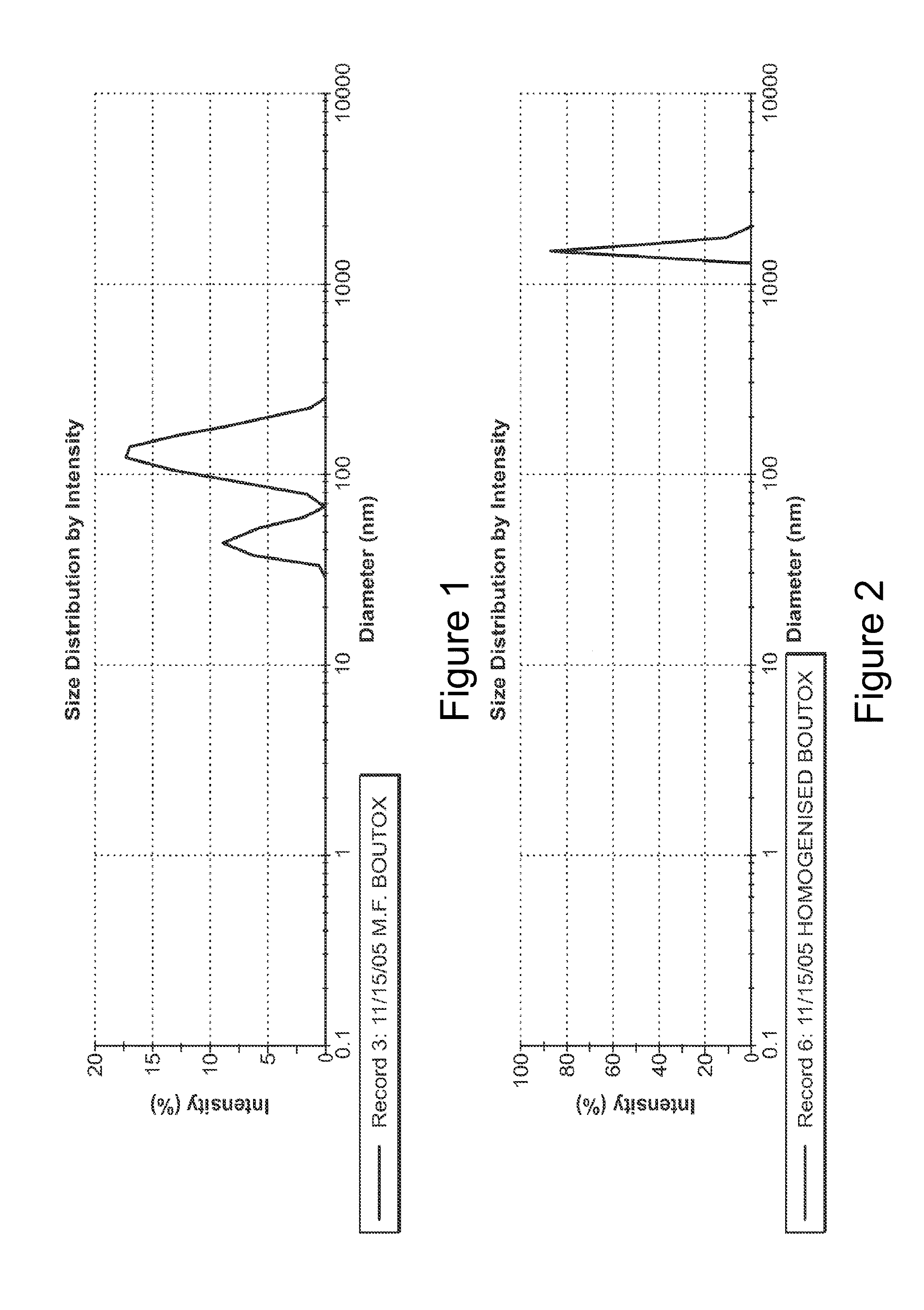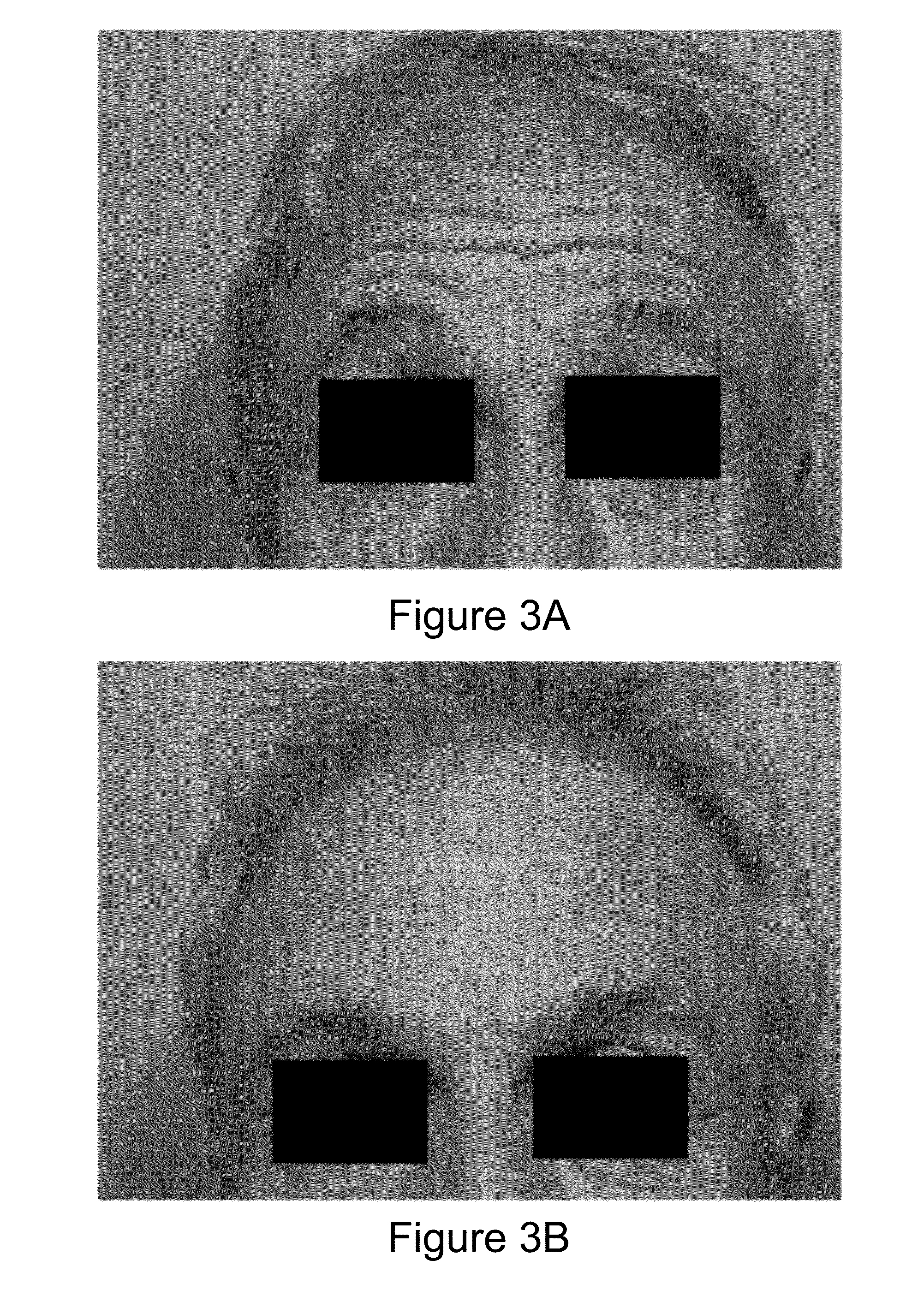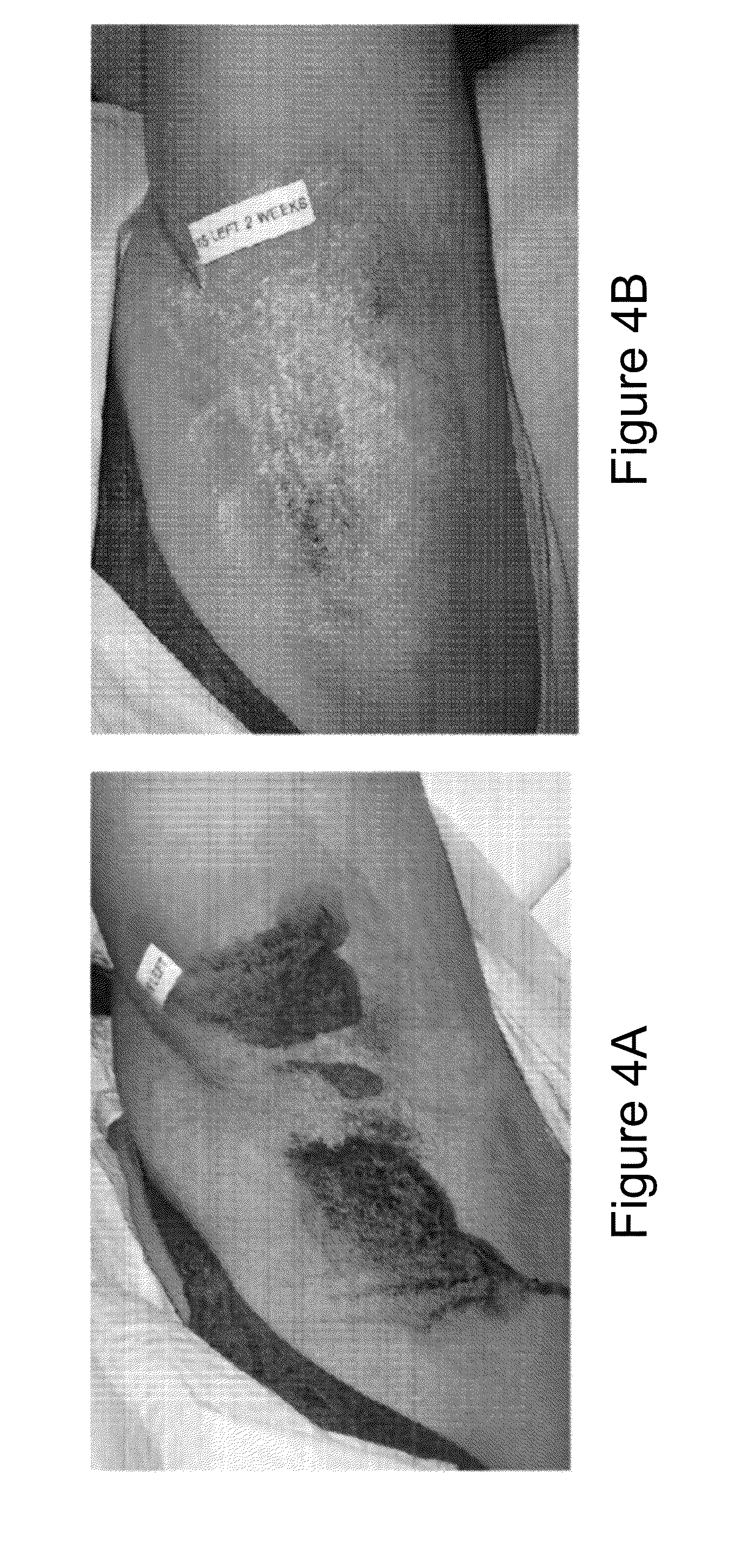Dermal Delivery
a technology of skin and cutaneous tissue, applied in the field of skin delivery, can solve the problems of undesirable side effects and current treatments that are not very successful, and achieve the effect of improving the effect of skin regeneration and elasticity
- Summary
- Abstract
- Description
- Claims
- Application Information
AI Technical Summary
Benefits of technology
Problems solved by technology
Method used
Image
Examples
example 1
Botulinum Nanoemulsion Formulation
[0455]This example presents one embodiment of nanoemulsion prepared by microfluidization comprising botulinum toxin (i.e., for example, botulinum toxin type A, whether complexed or isolated).
[0456]A preparation for microfluidization was made as follows:[0457]1. 5 g of soybean oil and 5 g of Tween 80 were mixed, heating as needed (typically not required) to emulsify the mixture.[0458]2. 100 Units of botulinum toxin type A, was added to 100 mL of deionized / distilled water and stirred until evenly mixed.[0459]3. Step 1 preparation was added to Step 2 preparation and stirred until evenly mixed.[0460]4. Preparation was homogenized for 1 minute (see resulting particle distributions in Table 1 and FIG. 1)[0461]5. Single-pass microfluidization procedure at 21,000 psi was performed using a Microfluidizer® Processor.
[0462]The resulting nanoemulsion was evaluated for particle size using the Malvern Nano S particle sizer capable of sizing particles between abou...
example 2
Muscle Relaxant Effect of Transdermal Botulinum Toxin Nanoemulsions
[0463]This example demonstrates the therapeutic efficacy of transdermally applied botulinum nanoemulsions (i.e., for example, a nanoemulsion containing botulinum toxin type A).
[0464]A botulinum nanoemulsion (9.9 U / 100 μl), prepared in accordance with methods similar to Example 1 (e.g., as described in co-pending U.S. patent application Ser. No. 11 / 607,436, entitled “BOTULINUM NANOEMULSIONS,” filed Dec. 1, 2006; incorporated herein by reference), was topically administered to the hind leg gastrocnemius muscle of ten (10) Swiss Webster female mice. A control group of ten (10) Swiss Webster female mice received an identically prepared nanoemulsion except that botulinum toxin was omitted. During the eleven days following treatment, the Digital Abduction Score (DAS) assay was used to determine local muscle weakening efficacy (Aoki, 1999), The DAS values were assigned as follows: (0) flat foot, digit spread same as control...
example 3
Administration of Botulinum Nanoparticle Composition to a Human Subject to Relieve Wrinkles
[0465]A topical botulinum nanoemulsion was prepared according to a method similar to Example 1 and applied to a person with significant forehead wrinkles to determine if it could be effective in relaxing the muscles in the forehead that generated those wrinkles (in much the same manner that would be expected from the injection of botulinum into those muscles).
[0466]Methods
[0467]A botulinum nanoemulsion was made employing steps similar to Example 1 (see, for example, those described in co-pending U.S. patent application Ser. No. 11 / 607,436, entitled “BOTULINUM NANOEMULSIONS,” filed Dec. 1, 2006; incorporated herein by reference).
[0468]The nanoemulsion was added to an equal volume of skin cream (Base PCCA Vanishing Cream Light) and was vortexed into a uniform cream.
[0469]A patient who had significant horizontal wrinkles over his forehead, representing overactivity of his frontalis muscles, was s...
PUM
 Login to View More
Login to View More Abstract
Description
Claims
Application Information
 Login to View More
Login to View More - R&D
- Intellectual Property
- Life Sciences
- Materials
- Tech Scout
- Unparalleled Data Quality
- Higher Quality Content
- 60% Fewer Hallucinations
Browse by: Latest US Patents, China's latest patents, Technical Efficacy Thesaurus, Application Domain, Technology Topic, Popular Technical Reports.
© 2025 PatSnap. All rights reserved.Legal|Privacy policy|Modern Slavery Act Transparency Statement|Sitemap|About US| Contact US: help@patsnap.com



